
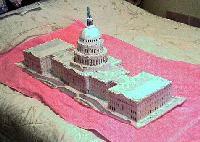
How to build a great big puzzle..
or
How to go from
 |
<--this
to this -->
|
 |
Without going insane
First of all, a bit of advice from one guy to other guys. Read the instructions. They don't tell you how to assemble the puzzle, they merely offer good advice. For instance, don't throw any extra pieces away until you have completed the puzzle. What are these extra pieces you may ask -- they're the byproduct of the production process, and they're marked with little red dots. The puzzles start out in big sheets of foam backed paper that look something like this....
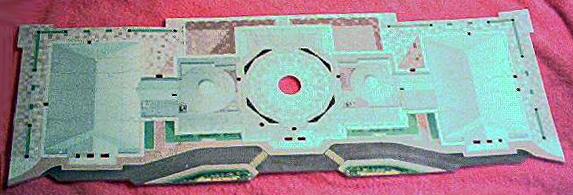
As you can see from this pictures, there are some spaces that are cut out, as well as the whole base being something other than rectangular. Those spaces are not part of the puzzle, but are part of the production process -- and they don't always get completely separated when the puzzle is die cut. So they are printed with little red dots, to indicate that they aren't parts of the finished puzzle. The best way to start is to cut open the plastic bag and dump the pieces in the box top (or some other confined space). Then, piece by piece move them from the box top to the box, separating out any piece with a red dot and putting it back in the plastic bag. After you do that, you should have a box full of puzzle pieces, and a bag with a couple of hand fulls of oddly shaped pieces with red dots. If, in the course of building the puzzle, you find you are missing a piece check the bag -- chanced are very good that it's in there. If a piece is nowhere to be found, the instructions include detailed drawings of the puzzle, you just mark the piece(s) that are missing and mail it to the address provided and they will send you the pieces you need. While you wait, you can take an exacto knife and cut a temporary piece from one of your red dot pieces.
The next step (after separating out the red dot pieces) is to start separating pieces into groups of similar looking pieces, and assembling the component parts of the puzzle.
The Base...

The roof and top sections
 |
 |
 |
|
Side Panels
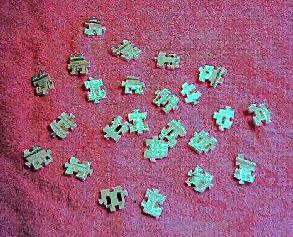 |
 |
 |
|
Many puzzle also come with printed cardstock pieces, or internal cardboard braces.
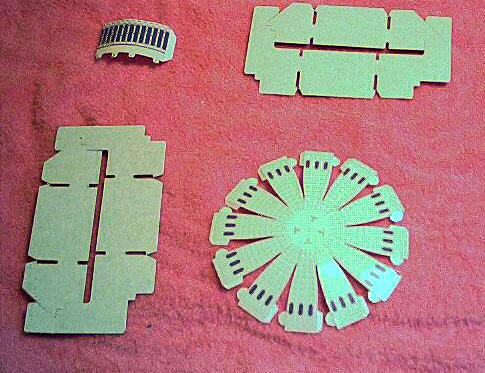 |
|
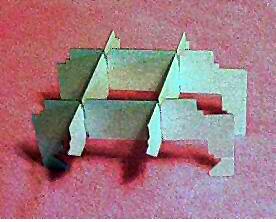 |
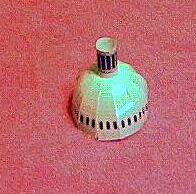 |
Once you have all the panels assembled, and the extra pieces prepared, it's time to start matching your panels to the pictures on the box (the bottom has several views from several angles to help you out), and matching the notches on the panel edges.
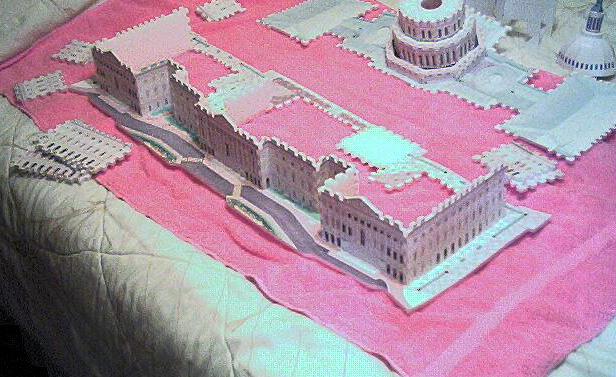
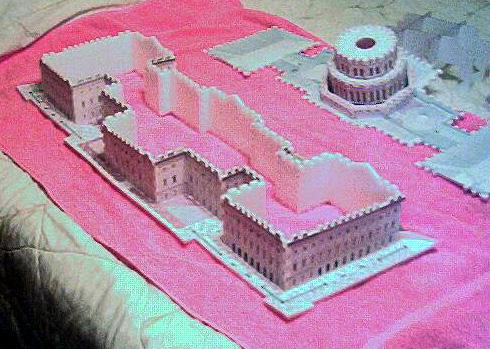
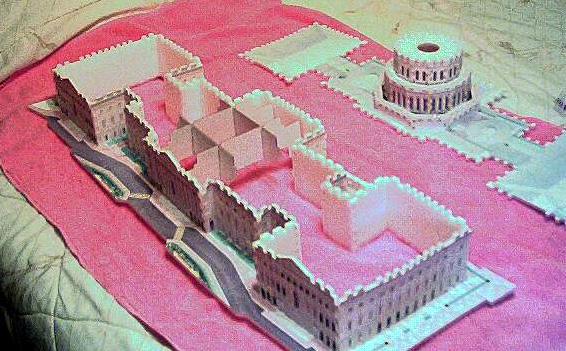
Then comes the fun part, stitching the top to the sides, and adding any extras.
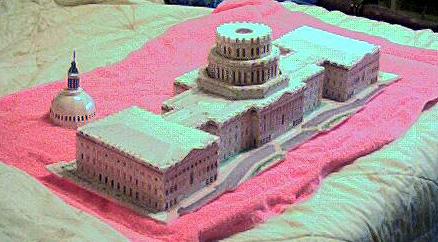
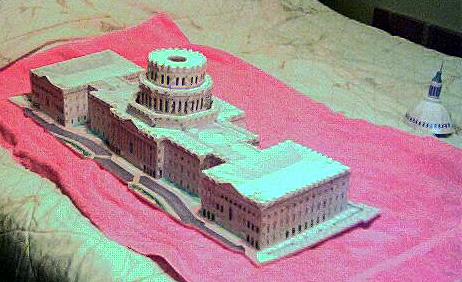
Recruit the local daughter to pose for size comparisons (which won't be hard, since she'll be busy offering to help you put it together the entire time)
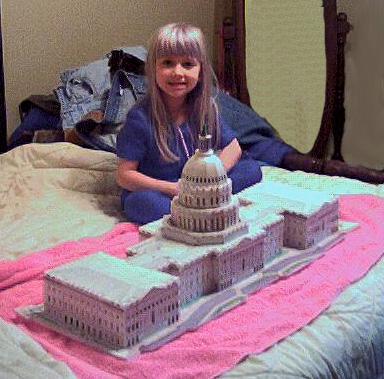 If
all went well, you have an assembled puzzle, and you sanity is still intact.
Then you'll be looking to get your next puzzle, and with choices ranging from
famous buildings, to a Williams F1 car, to a Mississippi Riverboat, and The
Millenium Falcon -- you have plenty to choose from. Personal experience says
to look for actual Puzz3D puzzles, they go together and actually fit. They're
market by Milton Bradley, or directly from Wrebbit -- both as Puzz3D puzzles.
If
all went well, you have an assembled puzzle, and you sanity is still intact.
Then you'll be looking to get your next puzzle, and with choices ranging from
famous buildings, to a Williams F1 car, to a Mississippi Riverboat, and The
Millenium Falcon -- you have plenty to choose from. Personal experience says
to look for actual Puzz3D puzzles, they go together and actually fit. They're
market by Milton Bradley, or directly from Wrebbit -- both as Puzz3D puzzles.
Good Luck, and have fun!